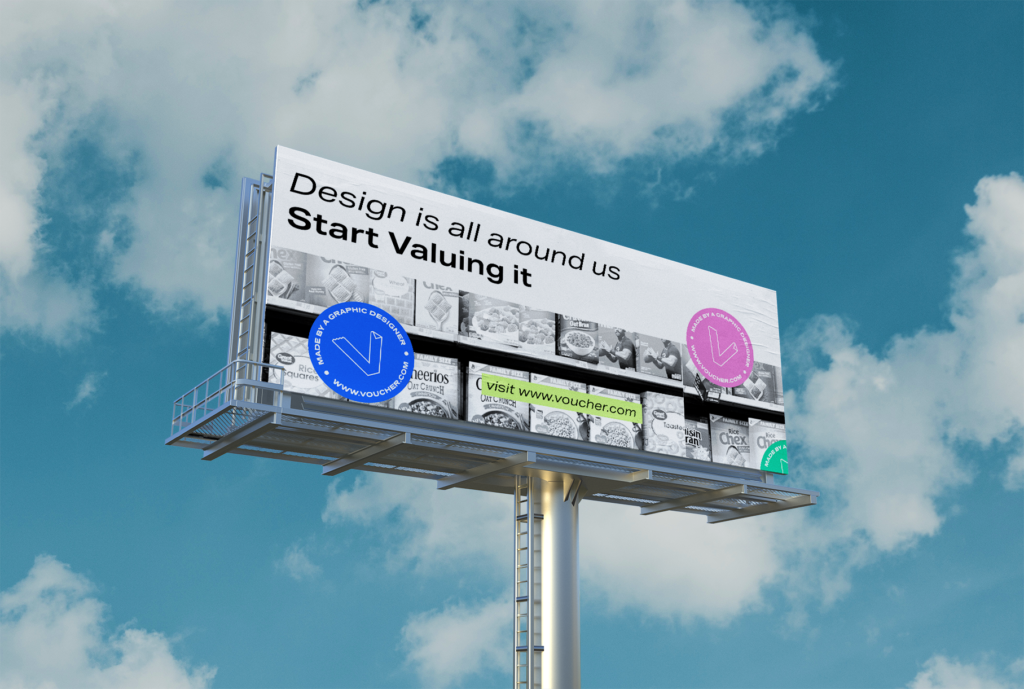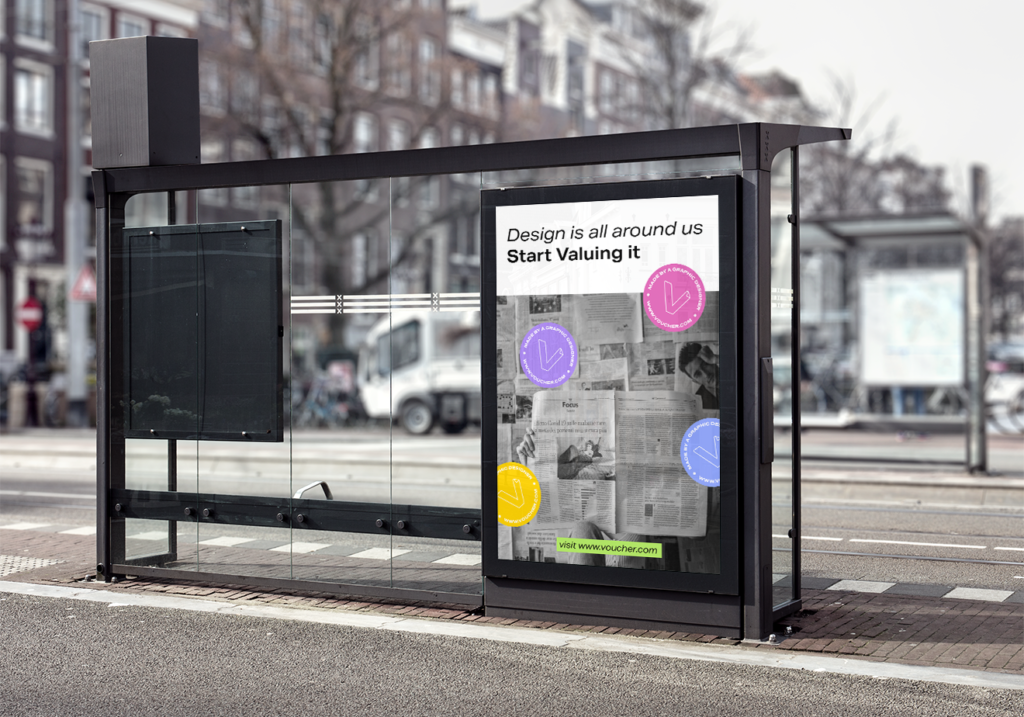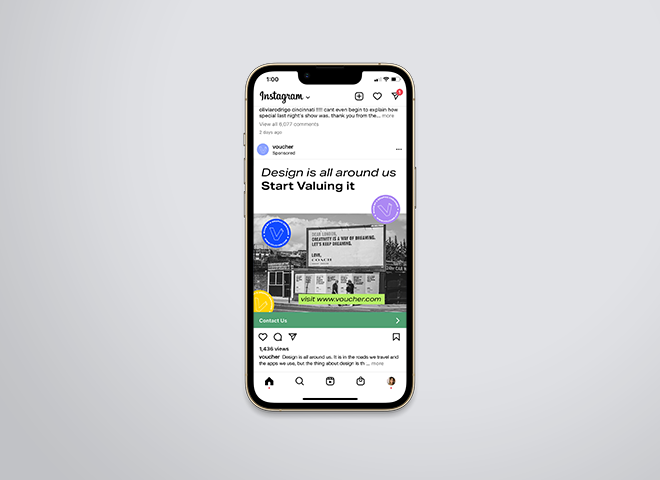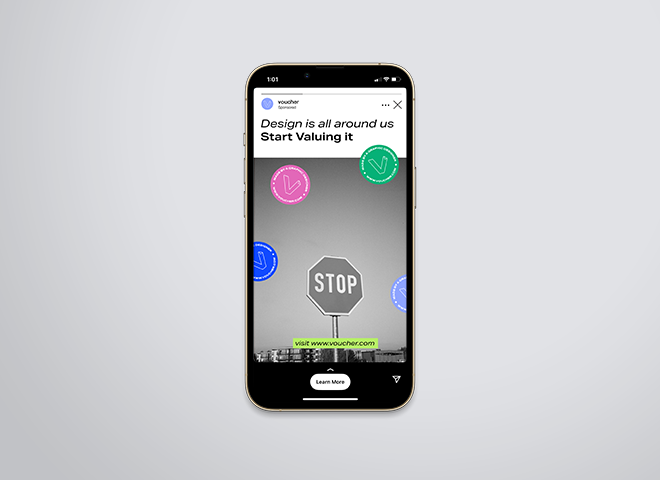VOUCHER
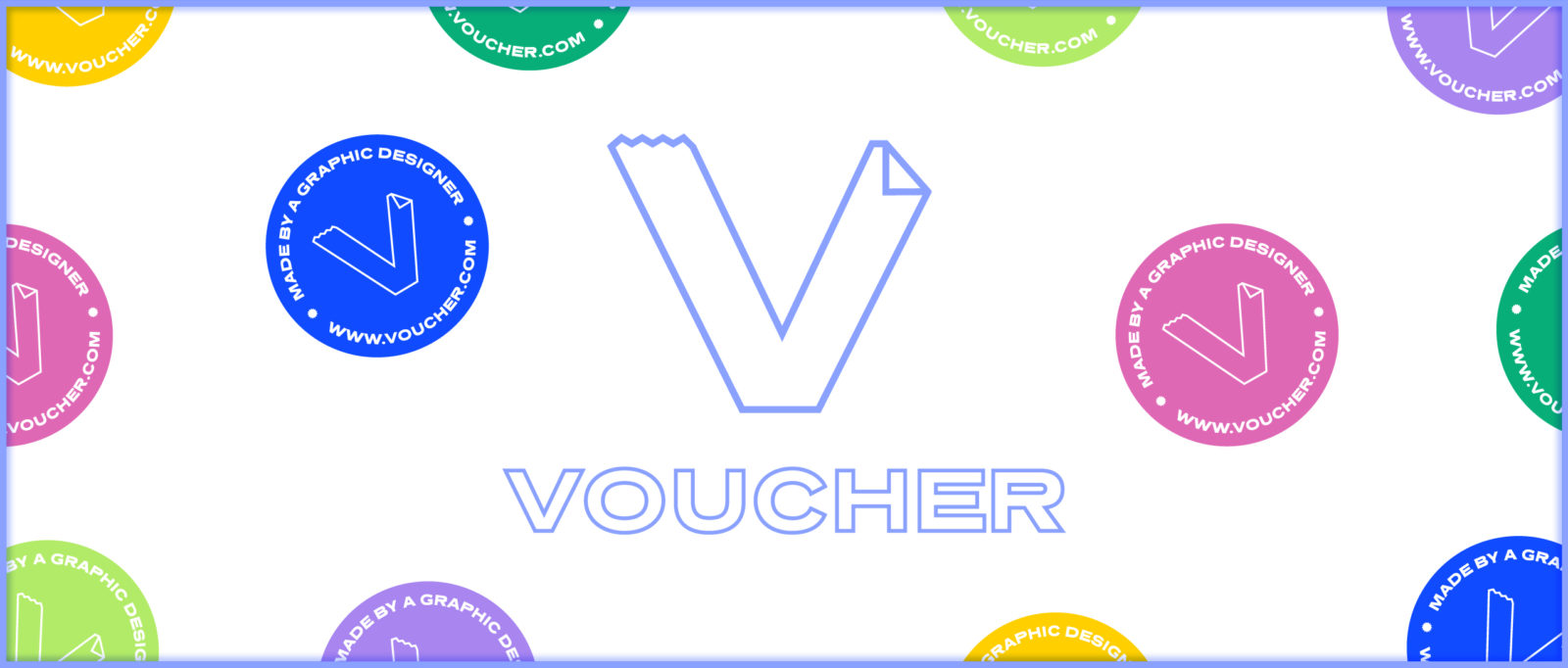
The Problem
Design is all around us. However, good design is not noticeable and oftentimes the value of design is not respected. Sites like Fiverr and 99designs put a low value on high value necessities like logos and brand packages. These sites contribute to the idea that design is “easy and cheap.” This leads people outside of the design world to place low price tags on designer’s tasks. In addition, many people who pursue design are doing so because they are passionate about it. Passionate people are more likely to be taken advantage of when it comes to their skill sets because they believe doing work for cheap can lead to good experience and exposure especially within the creative industry. Designers not getting paid what they are worth or having to deal with other’s disbelief when they propose a price tears at their self confidence and leads to many designers being disproportionately affected by imposter syndrome. Emerging designers aged 20-30 are being undervalued and underpaid within the industry.
How can I help emerging designers set higher standards for themselves and their work?
Success Statement
Designers will be able to go to one site and find transparent pricing for all of their design services. Additionally, those who are unfamiliar with design will be able to learn more about the pricing behind different design services and why those services are valuable. Both of these changes will help emerging designers feel more confident in their prices and combat any clients who may not understand them.
Target Audience
My target audience started as emerging designers aged 20-30, however through a lot of my research, I noticed that designers lose value in themselves through the impact of others not respecting their craft so I decided to take a two pronged approach to my project and also target those who hire or work with emerging designers.
Research
To gather research I focused on three main methods. I sent out a survey, conducted four interviews, and completed a competitive analysis.
Survey
I created a survey with four different sections. One was aimed towards designers and another towards non designers. The non designers section was then further separated between those who have worked with, hired, and not hired or worked with designers. I garnered 63 responses on my survey and had a total of 35 questions. I had 63.5 percent of respondents that were designers while 36.5 percent were non designers.
Some important metrics that I discovered from my survey were that 92 percent of designers said that they have been unsure how to price their services and 87 percent said they had been affected by imposter syndrome.
Additionally, I asked both designers and non designers what a graphic designer does. Responses from designers state that they solve problems and create solutions while non designers said that they design and create visuals. This showed a strong discrepancy between the value designers place on their own work compared to the value others place on design work.
Interviews
When it came to interviews I wanted to focus both on designers who were graduating soon like I was but also designers who were already in the field. I reached out to many different people and conducted four interviews. I interviewed Maddy Triplett who is a graduating interaction designer at Miami University, Roxy Prima a designer and muralist who often advocates for better pricing for creatives on social media, Carli Anna a brand strategist, and Kenzie Green a freelance designer. I got amazing responses from those interviews like “most people don’t understand how valuable graphic design is in their marketing efforts, most see it as the pretty face they slap on at the end as an afterthought.” I also noticed that each person I interviewed was struggling with the lack of transparency in design prices as well as the threat of websites likes 99designs and Fiverr.
Competitive Research
My last form of research was a competitive analysis. I looked at sites like Linkedin and Indeed and found many differences in job descriptions between design focused companies and non design focused companies. I also found a lot of discrepancies between pricing on sites like 99designs and Fiverr versus what some of my interviewees said they charged. Lastly I found a lot of amazing resources available on AIGA but not a lot of clear answers when it came to pricing. The contract guidelines AIGA gave were extremely helpful, but within the breakdown, they did not give prices that could potentially go along with each criteria.
Insights
At the end of my research process I went in and picked out some main insights that really drew me to my design solution. The first was that 92 percent of designers said that they were unsure on how to price their services. The next was the differences in the definition of design between non designers and designers. The third was a quote from one of my interviews that “People don’t go into Target and ask for a discount.” Based on those insights I developed my design solution.
Design Process + Testing
Throughout the design process, I wanted to make sure that whatever my final design solution looked like it worked to help designers and inform non designers. My insights really aided me in creating something that did just that. My insight of “People don’t go into Target and ask for a discount” led me to think about creating some type of receipt for design services. Receipts work to create a breakdown and an itemized list of what you are being charged for. I thought that since non designers are unfamiliar with everything that goes into the design process, this breakdown and an explanation of it would aid in understanding.
This is how the idea of Voucher came to life. A voucher is a type of receipt, but the word vouch means “to assert or confirm as a result of one’s own experience that something is true or accurately so described.” I think this was the perfect representation of what my goals were. In order for users to get this receipt, I created a pricing calculator that would allow designers to enter in criteria for their projects and then get a personalized receipt that they can then send to their clients. Each voucher would come with an explanation in order to inform others about everything that goes into the design process.
I did not want my solution to stop with the calculator. I also added in both a forum tab and a services tab to give more resources to the users. The forum tab acts as a way for designers to interact with each other, and share advice from more seasoned designers. This tab also has a section for non-designers to ask questions about the importance of design and hear responses straight from designers. The services tab represents different areas of design and gives definitions, examples, and a list of why these services are valuable.
I know that Voucher is something that I would find extremely helpful and from my survey I know that a lot of other designers are looking for something just like this. However, in order bring the second part of my target audience to this site I created a marketing campaign aimed towards bringing non designers to the site by raising awareness of different items that people interact with on a daily basis that are designed but you might not realize it. I took images of those items like stop signs, billboards, and cereal boxes and then used a sticker over top of the image with the voucher logo, the url, and the tagline “made by a graphic designer” to bring more awareness to the fact that design is all around us. I included sponsored Instagram ads as well as billboards and bus ads.
The last phase of this project was to conduct user testing. I really wanted feedback from people not within the design field as well as designers. I had two people click around on the website and give their opinion on how helpful the site is. Sabrina Boral, who is Technical Salesperson at Bloomberg said that “a tool like this would make it much easier to fairly compensate a designer for their work.” I also wanted to hear from someone who frequently prices their own projects and Erin Wagner said that “Voucher would really help streamline her client relationship process.” Lastly I wanted feedback from someone I interviewed about the pricing categories and she mention that in order to make it more customizable to each person, not to make each of the criteria I had listed a required metric because she personally doesn’t base pricing off of years of experience and knew others that didn’t as well. This is something that I made sure to include and even made it so that users can edit their receipts to further the personalization of the site.
Design Solution
Explore the Voucher Website!
Design is all around us. It is in the roads we travel and the apps we use, but the thing about design is that not being recognized as a designed “thing” is what makes it good. People know that having something designed well is important, but it is still not something people are always willing to pay for. Voucher aims to not only make design pricing more transparent and accessible, but also explain the impact and value design has on the world.




